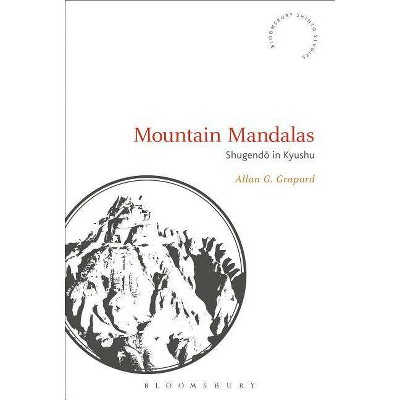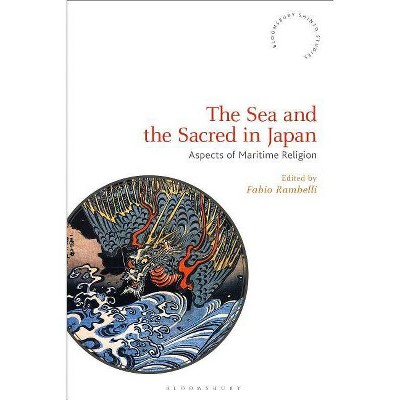Mountain Mandalas - (Bloomsbury Shinto Studies) by Allan G Grapard (Paperback)

Similar Products
Products of same category from the store
AllProduct info
<p/><br></br><p><b> Book Synopsis </b></p></br></br>In <i>Mountain Mandalas</i> Allan G. Grapard provides a thought-provoking history of one aspect of the Japanese Shugendo tradition in Kyushu, by focusing on three cultic systems: Mount Hiko, Usa-Hachiman, and the Kunisaki Peninsula. Grapard draws from a rich range of theorists from the disciplines of geography, history, anthropology, sociology, and humanistic geography and situates the historical terrain of his research within a much larger context.<br/><br/>This book includes detailed analyses of the geography of sacred sites, translations from many original texts, and discussions on rituals and social practices. Grapard studies Mount Hiko and the Kunisaki Peninsula, which was very influential in Japanese cultural and religious history throughout the ages. We are introduced to important information on archaic social structures and their religious traditions; the development of the cult to the deity Hachiman; a history of the interactions between Buddhism and local cults in Japan; a history of the Shugendo tradition of mountain religious ascetics, and much more.<br/><i><br/></i><i>Mountain Mandalas</i> sheds light on important aspects of Japan's religion and culture, and will be of interest to all scholars of Shinto and Japanese religion. Extensive translations of source material can be found on the book's webpage.<p/><br></br><p><b> Review Quotes </b></p></br></br><br>Allan Grapard's book is a rich, brilliant and thought-provoking exploration of Shugendo (Japanese mountain cults). Focusing on three adjacents regions in the northeastern part of Kyushu island (Mount Hiko, Usa, and the Kunisaki Peninsula), it combines a broad interdisciplinary approach, a deep knowledge of the textual tradition, and an imaginative interpretation. It will be a landmark in the study of Japanese religion.<br/>Bernard Faure, Kao Professor of Japanese Religions, Columbia University, USA<br><br>In <i>Mountain Mandalas</i> Allan Grapard writes with the confidence and clarity of a seasoned scholar to provide an illuminating and thought-provoking history of the Japanese Shugendo tradition in Kyushu. His study of Mount Hiko, Usa-Hachiman, and the Kunisaki Peninsula is a methodologically sophisticated work that effectively draws from the disciplines of geography, history, anthropology, sociology, and humanistic geography. Grapard has a singularly masterful command of the long sweep of Japanese religious history and the broad reach of Japanese religious geography. <i>Mountain Mandalas</i> makes for fascinating reading by anyone interested in how complex Buddhist doctrinal ideas were mapped onto striking topographic arrangements through the process of "mandalization+? and the way that the landscape of premodern Japan was shaped as much by sophisticated minds as it was by their skillful hands. Readers will be delighted by Grapard's extremely interesting forays into Hiko's "nocturnal architecture, +? the lore and symbolism surrounding swords, institutional history, ritual analysis, visualization, and the labyrinthine symbolism of Esoteric Buddhism. Grapard's book provides a compelling model for the way other religious sites might best be studied from a geographical and historical perspective.<br/>James Robson, Professor of East Asian Languages and Civilizations, Harvard University, USA<br><p/><br></br><p><b> About the Author </b></p></br></br><b>Allan G. Grapard </b>is Professor Emeritus in the Department of East Asian Languages and Cultural Studies at University of California, Santa Barbara, USA.
Price History
Price Archive shows prices from various stores, lets you see history and find the cheapest. There is no actual sale on the website. For all support, inquiry and suggestion messagescommunication@pricearchive.us




















